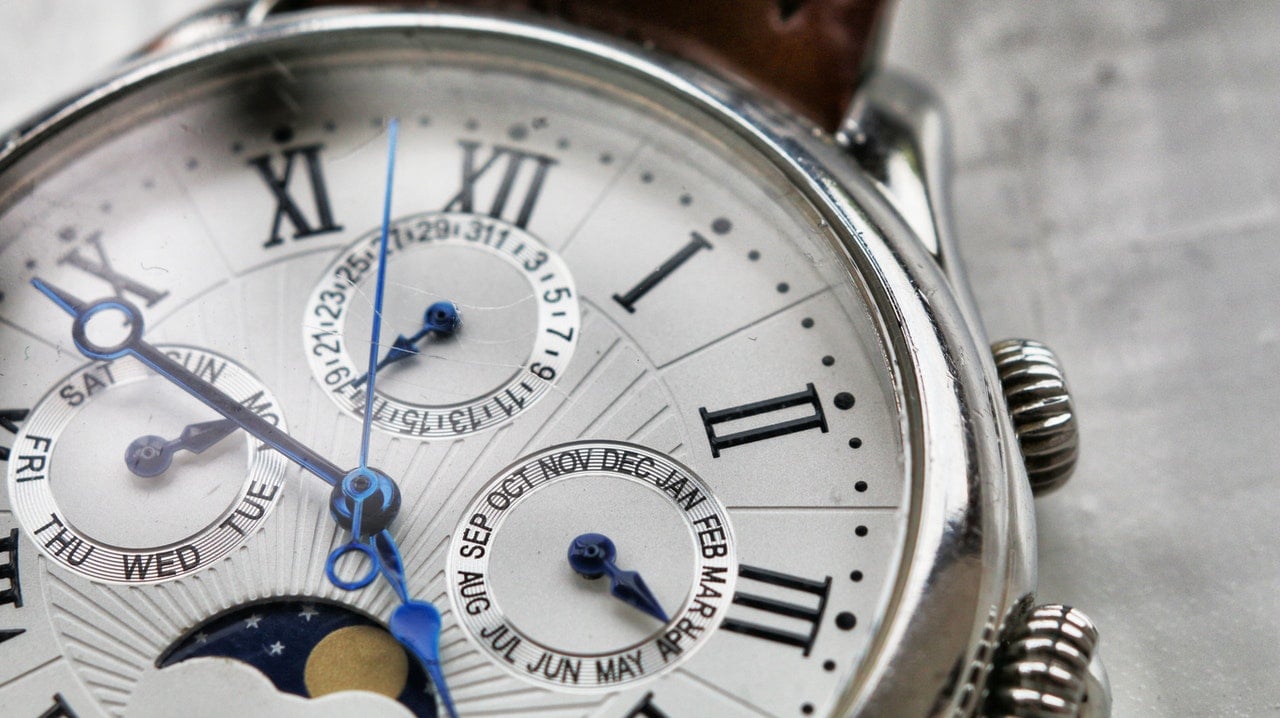Today, we are exploring the day and date complications. These complications are some of the most popular features in modern wristwatches. They are perhaps the most standard and useful complications available. Many watchmakers and brands choose to include this feature in the designs of their wristwatches whether for the sake of utility or aesthetics. These elegant complications exhibit true watchmaking expertise as the movements that power them must be complex and flawless. The day and date complications have only become commonplace relatively recently in horological history, but the inspiration behind this complication extends right back to the 1800s. If you are interested in the day and date complications, keep reading for some more information on these fascinating features.
What are the Day and Date Complications?
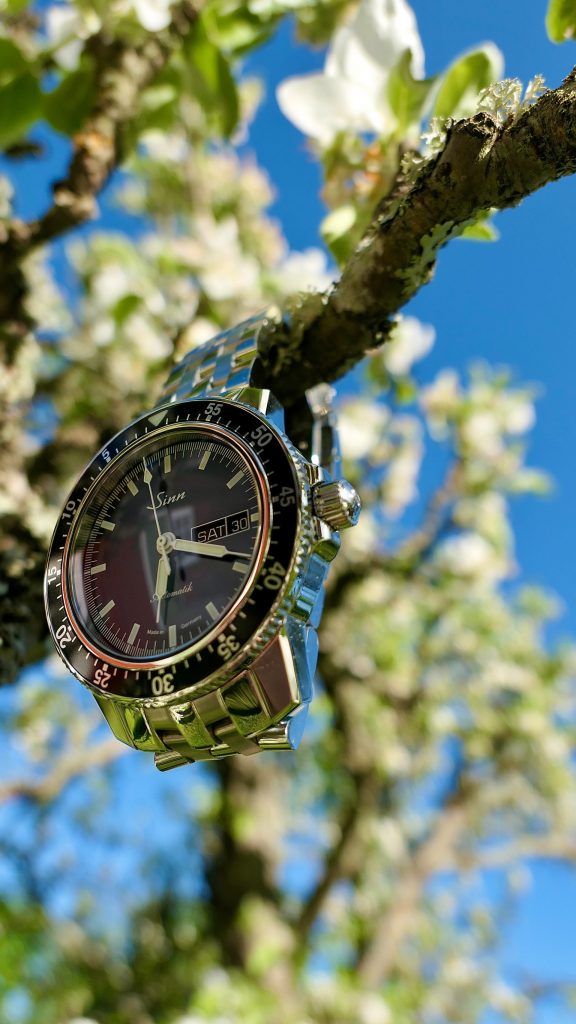
The day and date complications are how a watch wearer can read the weekday and date from the dial of their watch. These displays are shown through small apertures, or windows, in the dial. The weekday and date are some of the most integral pieces of information to have for the work day, so it is incredibly useful to be able to check these facts with a glance at one’s wrist. It is far quicker than using a phone or computer to check, so even in the current technology driven era, the day and date complications are vital.
The apertures tend to be positioned at 3 o’clock on the dial as this is the portion of the dial that can be seen at a glance, without needing to adjust the sleeve. However, this is not always the case in modern watch design as many brands like playing with their dial designs to produce unique and unusual timepieces.
How do the Day and Date Complications Work?
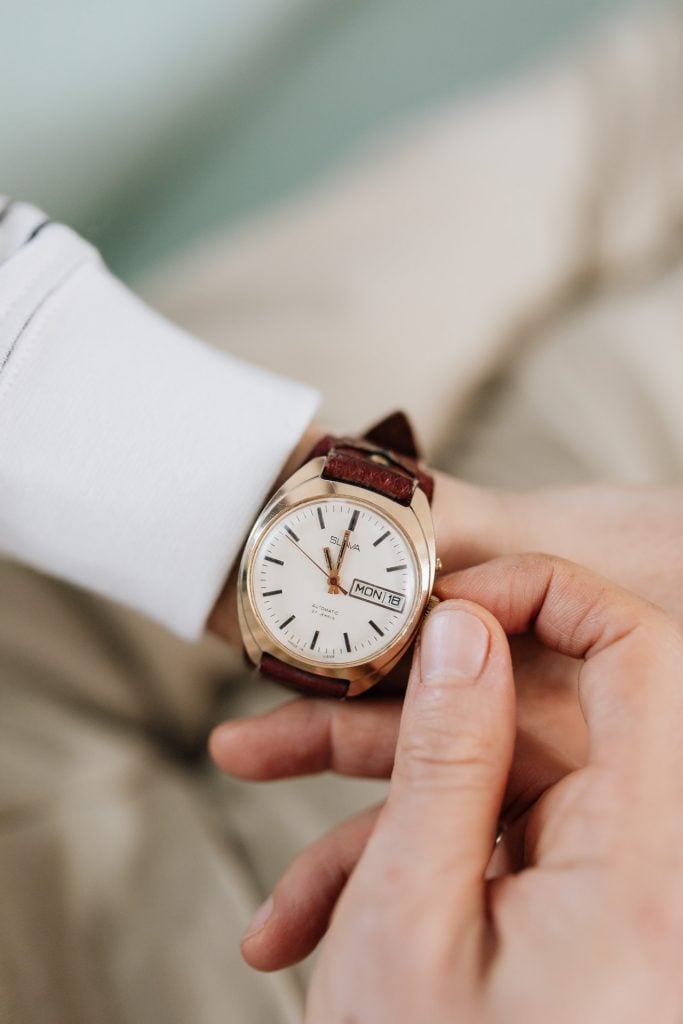
The day and date complications consist of small discs that are positioned beneath the dial. One disc will be printed with the weekdays, and the other printed with the dates of the month. Once every 24 hours, when the watch reaches midnight, the discs will be moved forwards by one position. This will allow them to display the correct weekday and date as soon as it changes.
Although modern watches make this adjustment automatically, they can be adjusted manually if necessary. This may be required if the watch has stopped for any reason. It may also be necessary to change the date manually if a month has only 28 or 30 days. This is because some watches with this complication will just change to the next date on the disc, leaving the display showing the incorrect date. Making this adjustment is relatively easy, and a guide on how to change the date can be found here.
A Brief History of the Day and Date Complications
Calendar complications have been used in pocket watches since the late 19th century. This complication has been a favourite amongst watch collectors for decades. Pocket watches with a date complication were first patented in wristwatches by the watchmaker A Hammerly in 1915. Hammerly created what is now known as the ‘pointer date’. The pointer date uses a hand which points to the date using a display that is printed on the outside of the dial. Hammerly also introduced the weekday display, positioning it under 12 o’clock in the dials of his watches.
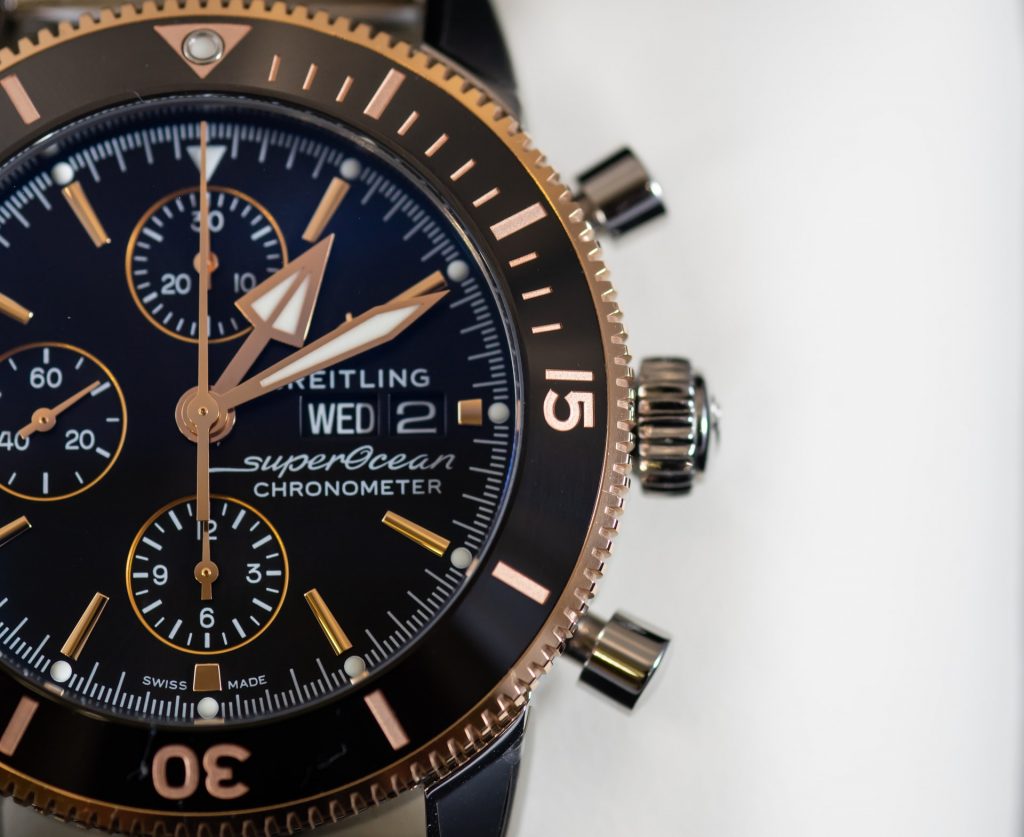
It was not until 1956 that the first watch with a day and date complication was introduced. Rolex launched its Day-Date watch which was a wristwatch that was both waterproof and a self-winding chronometer. This model featured a modern calendar and instantaneous day display with a date aperture. To this day, Rolex are still a leading brand with their iconic day and date complication watches. Rolex followed this watch with the DateJust model which was the first watch to automatically change the date.
Recommendations for Watches with Day and Date Complications
Michel Herbelin Newport Heritage Silver Sunray Dial Watch 1764/AP11BL
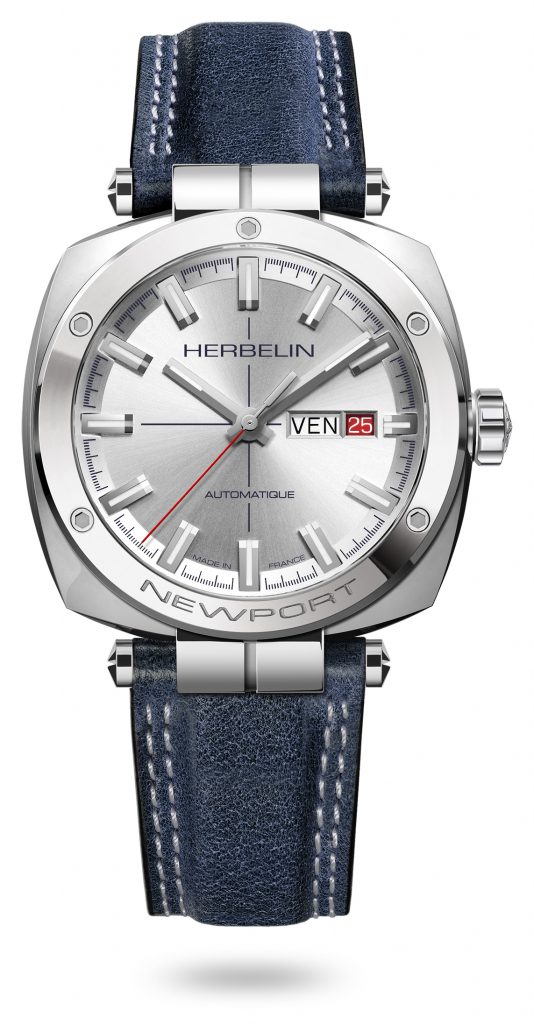
Michel Herbelin have placed the weekday and date aperture in the traditional 3 o’clock position on the silver dial of this model. The second hand and date display are red to ensure they are easy to read at a glance. The watch has an elegant silver and blue colour scheme with a stainless steel, square case. The case houses an automatic mechanical movement that will power the day and date complications seamlessly. The watch is secured on the wrist using a quality blue leather strap. The watch is inspired by nautical style and is water resistant up to 100 metres. The unusual case shape of this model makes it an eye-catching statement timepiece that would fit perfectly into any collection.
Seiko 5 Sport Cement 40mm NATO Strap Watch SRPG63K1
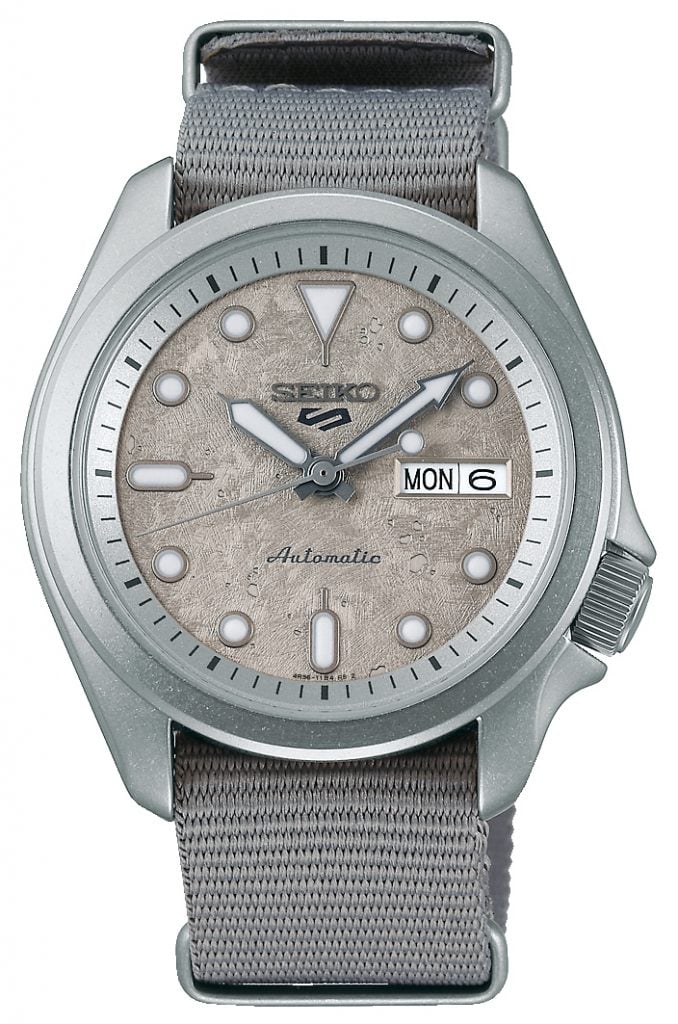
The cement grey shade of this watch ensures that it will match any other jewellery and clothing that it is paired with. This watch exhibits all of the features of a Seiko 5 watch including an automatic movement, a day-date display, good water resistance, a recessed crown and a durable case and bracelet. The grey dial features the weekday and date aperture at 3 o’clock. The complications are powered by a calibre 4R36 automatic movement that provides the watch with a 41-hour power reserve. This movement can be viewed through the exhibition case back. The watch is made using high quality materials including a stainless steel case, Hardlex crystal and a grey NATO strap.
Hamilton Khaki Pilot Quartz Stainless Steel H64611135
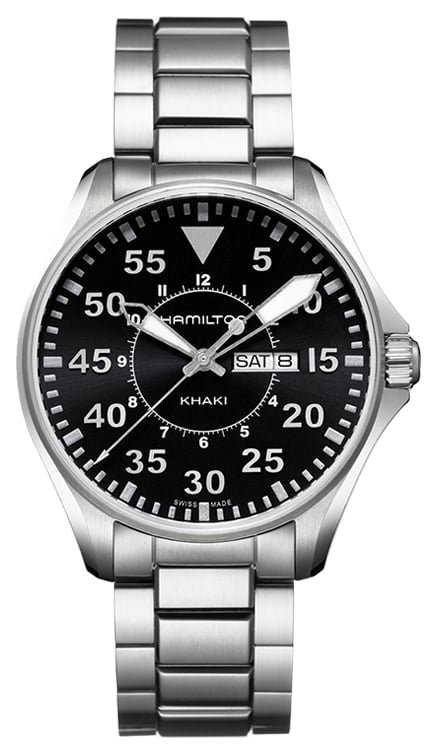
Hamilton has placed the day and date aperture of this model at 3 o’clock on the black dial. The dial is printed with large Arabic minute indices to ensure that the time and date are both easy to read at a glance. The dial features glowing hands which are protected by sapphire glass. As it is part of the Hamilton Aviation collection, the watch has a traditional pilots watch look. This model is water resistant up to 200 metres (20 bar), so it can be worn for a great number of swimming activities. The stainless steel case houses a battery powered quartz movement of the calibre ETA 955.422. The watch is finished with a stainless steel bracelet that fastens with a folding clasp.
Ball Watch Company Engineer II | Skindiver Heritage | Auto | TiC Black Coating DM3208B-S4-BK
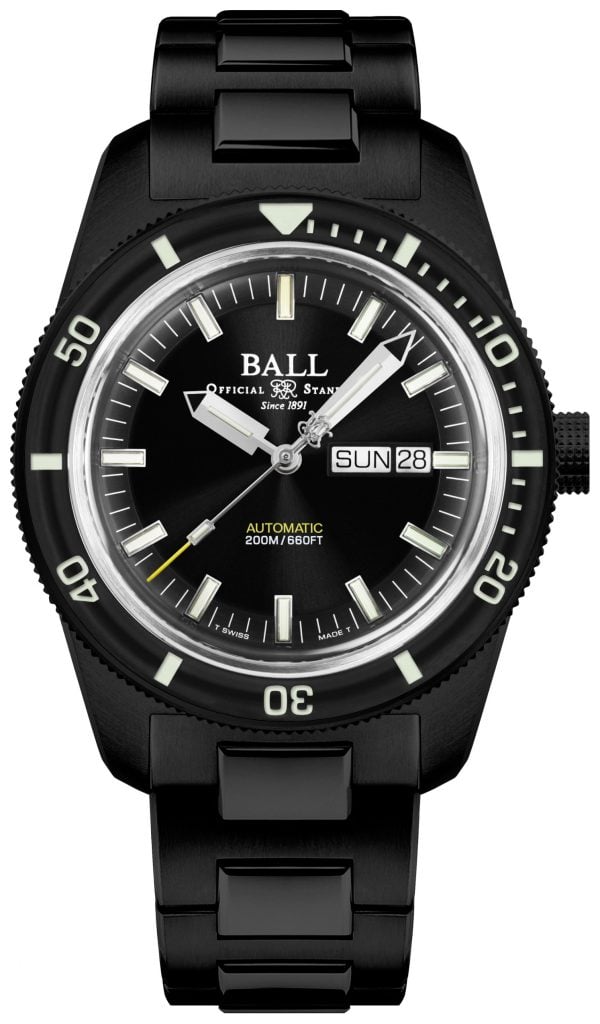
This new Ball model features an elegant and modern all-black colour scheme. The black dial exhibits a weekday and date aperture positioned at 3 o’clock. The hour indices are luminous so that they dial can be read easily in the dark or underwater. For a high-quality and long lasting finish, the dial is protected by sapphire glass. This model is unique as it is shock resistant up to 5000Gs and antimagnetic up to 4800 A/m. It is also water resistant up to 200 metres. The case of the watch is made of stainless steel that is coated with black titanium carbide. The stainless steel bracelet is coated with the same substance to ensure for a cohesive look.
Guess Women’s Comet | Stainless Steel Bracelet | Silver Crystal Set Dial GW0254L1
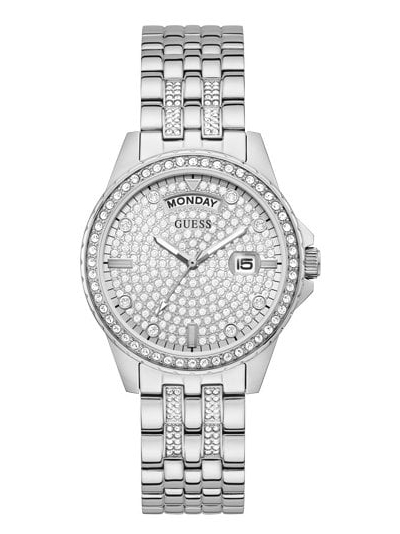
For the woman who loves glamour and sparkle in her timepieces, this Guess model is the perfect watch. This model features the day and date aperture in slightly different positions. The date aperture is placed at 3 o’clock and a weekday aperture is placed below 12 o’clock. The allows the displays to be slightly larger and therefore easier to read. The dial is entirely crystal set and protected by mineral glass. The stainless steel bracelet is detailed with crystals, giving the watch a cohesive look. The watch is powered by a reliable quartz movement and is splash resistant, making it suitable for daily wear.
What have you learnt after exploring the day and date complications? Would you consider adding a watch with a day and date complications to your collection? Let us know in the comments below!

